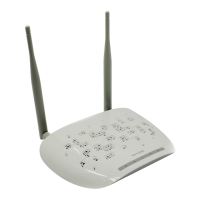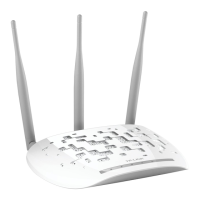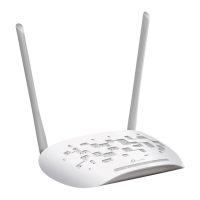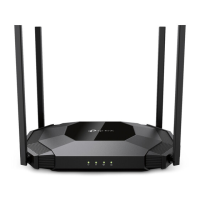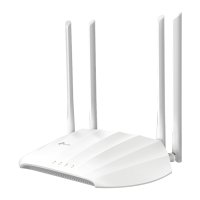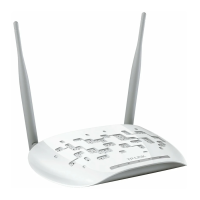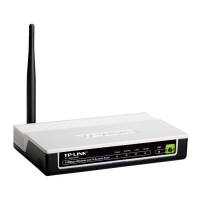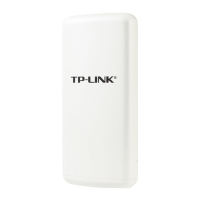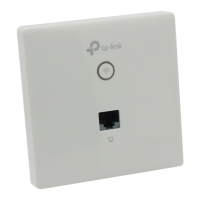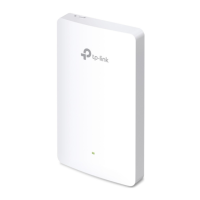Do you have a question about the TP-Link WBS210 and is the answer not in the manual?
Device acts as a central hub providing wireless access for clients.
Device transforms wireless signal into wired one for point-to-point networking.
Device accesses internet via WISP and acts as a home wireless router.
Device functions as a home wireless router with extended wireless range.
Device extends the wireless coverage of an existing wireless network.
Device extends wireless coverage using a different SSID than the root AP.
Set up WAN connection types, IP addresses, and other related parameters.
Configure LAN IP addresses, subnet masks, and DHCP server settings.
Set up NAT, DMZ, Virtual Server, and Port Triggering for network access.
Enable SPI Firewall, Ping Forbidden, and VPN functions for network security.
Set basic wireless configurations like mode, channel, and transmit power.
Set wireless client parameters for connecting to an upstream wireless AP.
Configure AP parameters for clients to access the wireless network.
Create up to four virtual wireless networks for user access.
Control network access based on MAC addresses of wireless hosts.
Monitor network connectivity and reboot the device if failure occurs.
Browse for and upload a firmware file to update the device software.
Device acts as a central hub providing wireless access for clients.
Device transforms wireless signal into wired one for point-to-point networking.
Device accesses internet via WISP and acts as a home wireless router.
Device functions as a home wireless router with extended wireless range.
Device extends the wireless coverage of an existing wireless network.
Device extends wireless coverage using a different SSID than the root AP.
Set up WAN connection types, IP addresses, and other related parameters.
Configure LAN IP addresses, subnet masks, and DHCP server settings.
Set up NAT, DMZ, Virtual Server, and Port Triggering for network access.
Enable SPI Firewall, Ping Forbidden, and VPN functions for network security.
Set basic wireless configurations like mode, channel, and transmit power.
Set wireless client parameters for connecting to an upstream wireless AP.
Configure AP parameters for clients to access the wireless network.
Create up to four virtual wireless networks for user access.
Control network access based on MAC addresses of wireless hosts.
Monitor network connectivity and reboot the device if failure occurs.
Browse for and upload a firmware file to update the device software.
| Model | WBS210 |
|---|---|
| Type | Wireless Access Point |
| Wireless Standards | IEEE 802.11b/g/n |
| Frequency | 2.4 GHz |
| Wireless Speed | Up to 300 Mbps |
| Operating Humidity | 10% to 90% non-condensing |
| Interface | 1 x 10/100Mbps Ethernet port |
| Operating Modes | Access Point, Client, Repeater |
| Security | WEP, WPA/WPA2, WPA-PSK/WPA2-PSK |
| Operating Temperature | -30°C to 70°C |
| Storage Temperature | -40°C to 70°C |
| Storage Humidity | 5% to 90% non-condensing |
| Outdoor Range | Up to 5 km (depending on environment) |
| Antenna | 2 x 5dBi Detachable Omni-directional Antennas |
